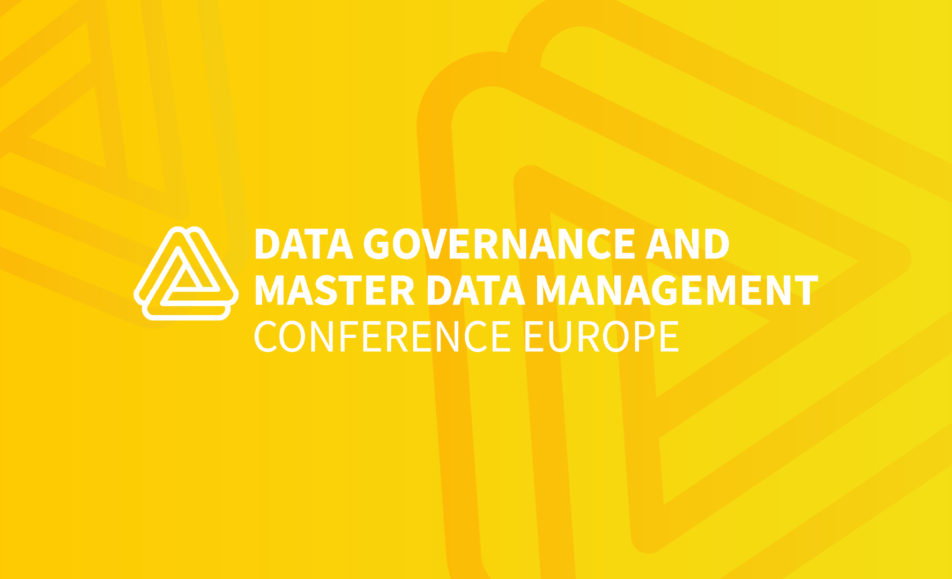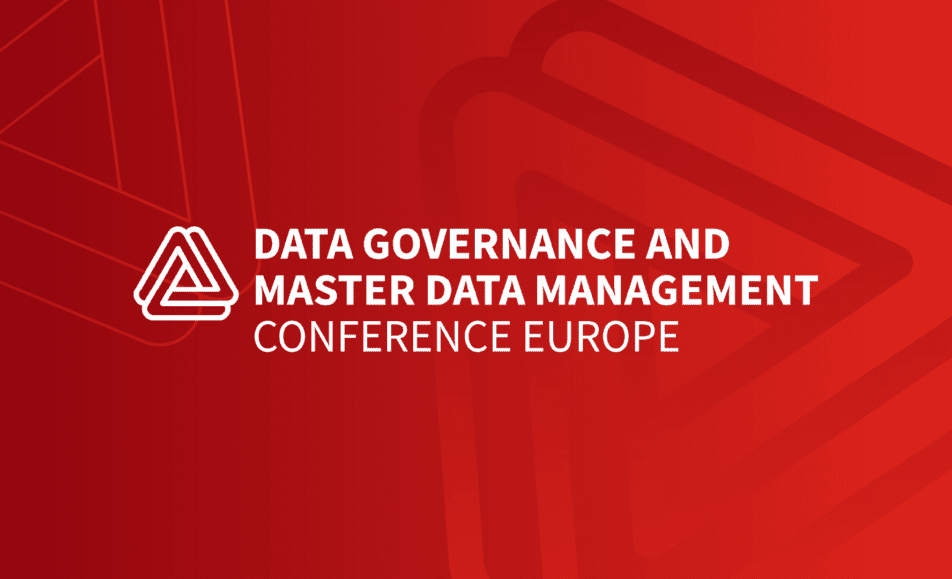- Location
- Category
With data being at the forefront of ALL business, the need for organisations to produce a wide-ranging Data Strategy is greater than ever, with both the increase in data regulations and the focus on data driven business outcomes. Yet, creating an enterprise wide data strategy and the governance to support it can be a formidable task. Often, it is difficult to know where to begin, and how best to prioritise efforts due to the large number of stakeholders and many competing initiatives. Data is at the heart of all organizations, almost like blood flowing through its arteries and veins. However, all too often Information is not professionally managed with the rigour and discipline that it demands. Nonetheless the implications of poorly managed information can be catastrophic, from legal and other regulatory sanctions ultimately to business collapse.
Professor Joe Peppard (European School of Management, Cranfield) summed it up when he said: “The very existence of an organisation can be threatened by poor data”. This 2-day course will provide concrete practical approaches to get you started on your Data Strategy, the typical contents of a Data Strategy, and the ways in which your supporting Data Governance framework can be organised.
Components of a Data Strategy
- Where do I Start & What is the Scope of the Data Strategy?
Whilst ultimately a strategy should cover ALL data and Information across the organisation, we should recognise that the implementation of recommendations will need to be prioritised.
Of course, should there be any Business areas or types of data that are out of scope, this should be clearly stated, and the rationale for their exclusion made clear.
For example, unstructured data should not be out of scope for ever, since for many organisations the breadth of the people impacted will be enormous, plus “records” management has a legal obligation. Thus, for example, it may mean that “records management” isn’t the first area implemented in the transition steps of your strategy implementation roadmap, however it must be covered eventually.
- Building Blocks of a Data Strategy & Architecture
- Understanding the business strategy and the motivation for its development.
- A current state data management maturity assessment to determine where we are now.
- A Target state data management maturity positioning to help determine the gap and aid in the prioritisation of roadmap activities.
- Data Architecture components, consideration and & pre-requisites
- The roadmap and implementation activities.
Establishing Goals & Gaining Buy-In
- Motivation and Drivers
What is the compelling business reason that has made the company decide to embark upon a Data Strategy? The case for change needs stating here, e.g. there is data dependency for achieving core business strategies for customer growth/cross sell etc, and real stories of what has happened in the recent past. We should include some facts and figures (how many breaches, manhours to respond to regulatory requests for information, customer complaints etc)
- Internal Factors
Here we need to list the internal factors such as efficiency, duplicated effort, reliability of information, lack of trust in data, agility to respond to change, desire to “go digital”, morale amongst knowledge workers, etc. Incidents & case studies should be cited.
- External factors
What are the market forces and regulatory factors driving the need to change: Competitors, need to offer wider range and platforms for services, mobile services, GDPR, FoA, etc
Effectively communicating needs and expected return on investment (ROI) to senior stakeholders
Data Management Maturity Assessment
A key foundation to the strategy is a maturity / current state assessment, together with a statement of the required target end state. The maturity assessment should cover the Data Management Disciplines AND the Organisational Enablers (AKA Business Environmental Factors) for data management.
- Data Management Maturity Assessment of the Disciplines of Data Management.
Depending upon the type of strategy, the maturity assessment may focus on a few specific areas, vs covering all 11 of the DAMA Data Management disciplines. The coreareas of Data Governance, Modelling, Quality, Metadata, Master data and Data Architecture will probably suffice.
Notwithstanding this, an effective Data strategy should at least mention on the other disciplines. Security (classification), Data Integration, Document Management etc.
- Maturity for Organisational Enablers of Information Management
In addition to assessing the level of maturity within each of the disciplines of Data Governance, there are 6 other “enabling” aspects of capability building which should be assessed. Along with the detailed maturity components these are considered in the creation of a roadmap for improvement.
- People: Relates to the human side of Information Management, looking at how people are trained, measured, motivated and supported in IM related activities. Organisations that motivate staff to think about information as a strategic asset tend to extract more value from their and overcome shortcomings in other categories.
- Executive Sponsorship/Policy:The message and support shown to the overall program and individuals from senior leadership. The assessment considers whether individuals are required to administer and maintain information assets appropriately and whether there are consequences for inappropriate behaviours. Without good policies and executive support, it is difficult to promote good practices even with the right supporting tools.
- Technology: The tools that are provided to teams within each discipline to properly meet their Information Management duties. While technology on its own cannot fill gaps in the information resources, a lack of technological support makes it impractical to establish good practices.
- Compliance: Surveys the external Information Management obligations (if any) of the team. A low compliance score indicates that the organisation is relying on luck rather than good practice to avoid regulatory and legal issues.
- Measurement: Examines how the organisation identifies information issues and analyses its data. Without measurement, it is impossible to sustainably manage the other aspects of the framework.
- Data Management Processes / Practice:Considers whether the organisation has adopted standardised approaches to Information Management. Even with the right tools, measurement approaches and policies, information assets cannot be sustained unless processes are consistently implemented. Poor processes result in inconsistent data and a lack of trust by stakeholders.
Data Governance: Managing people, Organisation & Process
In an effective data strategy, we must ensure that the data asset will be managed. The Data strategy should refer to Data Governance activities which will develop a Target Operating model for Data Governance covering:
- Steering and Governance
- The organisation structure for data governance is recommended here.
- Charters or terms of reference for steering group(s) and the recommended constitution of each group.
- Roles & Responsibilities & People Capabilities
- The essential Data Governance roles & activities.
- Capabilities for core Data Management roles may be covered in a strategy.
Data Management Process
A Data strategy should tie in the Change Management Process, and Solutions Development Process with data touch points during the Systems Delivery Life Cycle (SDLC).
Prioritising Business Critical Data and Capabilities
- Capabilities & Critical Data
Defining & managing the business-critical data and the people capabilities required for their management.
- Architecture
- Building the appropriate technical architecture for the known and anticipated data needs, incorporating the need for flexibility and emerging trends.
- Recommending the overall Technical Data Architecture for actioning the priority needs of the data strategy. Here we would typically refer to categories of Data Management tools that are usually used during a data improvement program. These may be technical data management tools and non-technical like data dictionary, data governance, data modelling, process modelling, etc.
- Principles & Minimum standards for Data
The principles for data management with rationale, implications minimum standards and metrics.
Defining an Actionable Roadmap
- Success Metrics
From the Principles and Minimum standards, quantifiable success metrics can be developed. Examples will be used to illustrate this.
- Priorities & Quick Wins
Business initiatives and priorities that are used in the formulation of the roadmap and transition steps. In particular, the transition steps will be aligned with business initiatives.
- Roadmap, Dependencies and Transition Steps
- Roadmap of the recommended activities to move the data initiative forward. There may be specific business teams who are keen to be early adopters.
- The overall roadmap must make it clear that there will be dependencies with some activities, for example to undertake XYZ Master Data Management, a minimum viable Data Governance process and responsibilities must be established for area XYZ.
- The overall “Roadmap” is made up of Transition steps which can be bundled into Transition projects.The key consideration here is that the most successful transitions are where they are aligned with business initiatives and are not simply “data projects”.
- Culture, Communication, Sustainability & Education
Development of a communication plan regarding the data strategy. The communication plan needs to have at least: Audience, Message, Method, Frequency.
Development of an education plan to raise Data Management competencies across the organisation & ensure the sustainability of the strategy.
- Funding Model
Recommendations on funding approach for Data initiatives.
Additional Activities to Support the Strategy
EveryData strategy will need several additional activities for its continued success, these include:
- Identify Candidates for Roles
The roles, responsibilities and the skills necessary to undertake the Data Management roles will need to be developed. The identification of named potential candidates for the necessary roles must be undertaken by, particularly with involvement of the HR department. The consulting team can provide mentoring and guidance if required.
- Determine Data Owners & Stewards
This is a specific subset of the item above, i.e. to identify named candidates for data owners and stewards. A Business Level Conceptual Data Model is an essential step in determining data subject areas for which Data owners should be appointed.
- Assess Current Roles and Skills, Perform Gap Analysis
This is a supporting activity for the task above (identify candidates for roles). The current level of skill attainment (for each of the skill types identified in the skill / roles descriptions) will need to be assessed.
- Identify Training Required to Address Gaps
Identify the types of development required by role & category of user to address gaps in skill sets. will need to arrange the development (including training) that is needed to address the Data Management skill gaps identified.
- Brief and Mentor Data Owners
To make Data Governance a reality & start a real roll out of DG, it is crucial to provide tailored training and mentoring for Data Owners and Stewards. This is a subset of the task above and applies to those staff whose role in DG is ‘Owner’ or ‘Steward’.
- Define Data Subject Areas & Develop Conceptual Data Model
Define the Data Subject Areas and conceptual data model (CDM). This is to support several of the Data Governance standards that will be produced and to provide the means of agreeing data areas & data owners for governance.
- Determine & Prioritise Business Areas for Data Governance Rollout
Determine the Business areas and / or the initiatives to prioritise and sequence for the rollout of Data Governance across the organisation.
Level Set Understanding & Terminology:
- Understand the key components that comprise a Data Strategy.
- Learn how to create a case for obtaining business buy-in for a data strategy.
- Understand the different types of Data Strategy and how to set the scope for it
- Learn how to create metrics for tracking the progress of your data strategy.
- Learn about the need for and the application of Data Asset management and Governance for different categories of challenges
- Understand why a Business focused Data Governance framework must be aligned with your emerging data strategy.
- Appreciate the critical role that Data Governance plays in the core Information disciplines including Master Data Management and Data Quality management, and why this should be recognised in you Data Strategy.
Pragmatic Learning
- Discover the different types of data strategies and which is most appropriate and practical for you.
- Learn the different motivations for Data Asset management and Governance and how best to implement DG approaches
- Develop a set of usable techniques that can be applied to a range of information management challenges
- Learn the best practices for managing Enterprise Information needs
- Learn how to create an actionable road map to implement your data strategy.
- Understand how to identify the additional activities that are necessary to support the data strategy.
- Data Strategists
- Data Governance Managers
- Data Quality Managers
- Data Analysts
- Data Architects
- MDM Managers
- Information Architects
- Business Intelligence & Data Warehouse Developers & Architects
- Enterprise Architects
- Solution Architects
- Application Architects
- Business Analysts
- Project / Programme Managers
- IT Consultants
- Information Quality Practitioners
- Location
- Category
This site uses cookies. Find out more about cookies and how you can refuse them.




